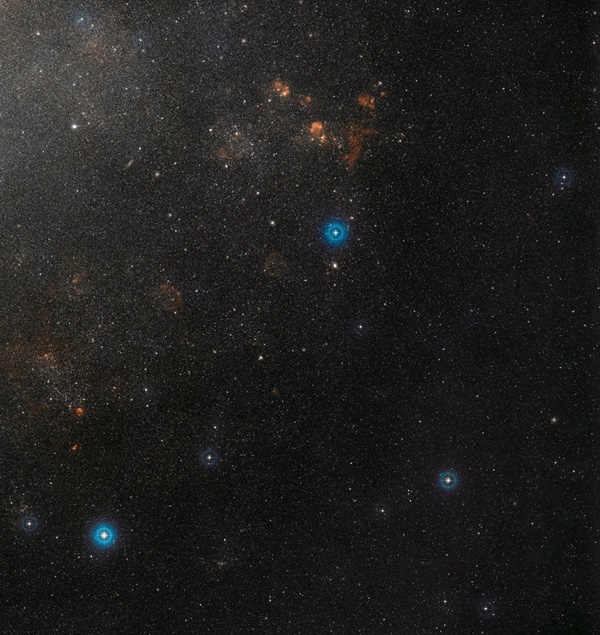Key Takeaways:
The candidate lies within a cloud of gas near the center of our galaxy, called CO-0.40-0.22. Last year, a team of astronomers led by Tomoharu Oka of Keio University in Yokohama, Japan, discovered the cloud using the National Astronomical Observatory of Japan’s Nobeyama radio telescope. After studying the cloud more closely with the Atacama Large Millimeter/submillimeter Array (ALMA) in Chile, Oka’s team identified a portion of the cloud that seems to be harboring something massive — something on the order of an intermediate-mass black hole. Their findings were published September 4 in Nature Astronomy.
Step by step
When Oka’s team discovered it, CO-0.40-0.22 showed intense motion among the gas particles inside it. Some of the velocities the team initially charted were high enough to indicate the presence of something massive there. Upon following up with ALMA, the team again identified a portion of the cloud moving with high velocity, but this time they also found a localized radio source within the cloud — right next to that clump of fast-moving gas.
The radio source, called CO-0.40-0.22*, has a spectrum that shows striking similarities to the radio source in the center of the Milky Way associated with our 4-million-solar-mass supermassive black hole, Sagittarius A*. However, CO-0.40-0.22* is 500 times less luminous than Saggitarius A*, indicating it is something similar, but smaller — like an intermediate-mass black hole. Based on simulations of the gas motions measured during the initial detection of CO-0.40-0.22, Oka’s team found that the massive object in the middle could be a black hole 100,000 times the mass of our Sun.
Though this is one of several candidates currently in the running as intermediate-mass black holes, “It’s a very careful paper and they have gorgeous data. It’s the most promising evidence so far,” said Kevin Schawinski of the Swiss Federal Institute of Technology in Zurich in a press release. Other candidates, which include objects called ultraluminous X-ray sources, are both faraway (located in other galaxies) and could be either intermediate-mass black holes feeding at a medium pace, or smaller, stellar-mass black holes feeding at a frantic one. This is why astronomers are still divided on those sources’ legitimacy, but why this new source, which shows multiple lines of evidence, is more promising.
Making an intermediate-mass black hole
If CO-0.40-0.22* is an intermediate-mass black hole, how did it form? According to the team’s observations, the object is likely too large to have formed directly where it lies, inside the cloud of gas. Instead, they believe that CO-0.40-0.22* once sat in the center of a small dwarf galaxy, which was cannibalized by — and subsumed into — the Milky Way sometime in the past. Over time, the remnants of that galaxy’s core could have ended up inside our own — remnants that include CO-0.40-0.22*.
Given that our current picture of galaxy growth does indeed involve larger galaxies “eating” smaller ones, and the fact that the Milky Way has about 50 dwarf galaxies available for snacking in the near vicinity today, this theory seems quite probable. According to Schawinski, the Large Magellanic Cloud, one of the Milky Way’s current satellite galaxies, could someday end up in a similar situation, stripped of stars and left as nothing but a core inside the center of our galaxy.











